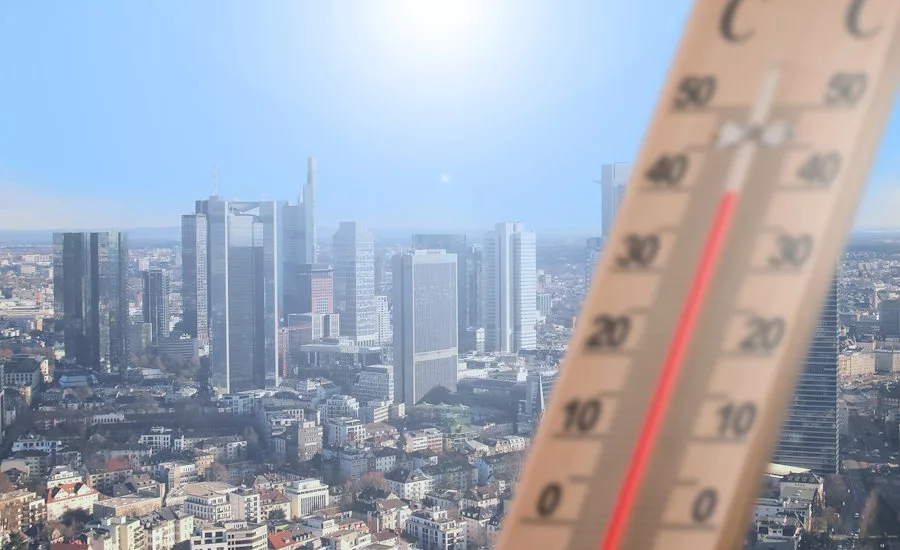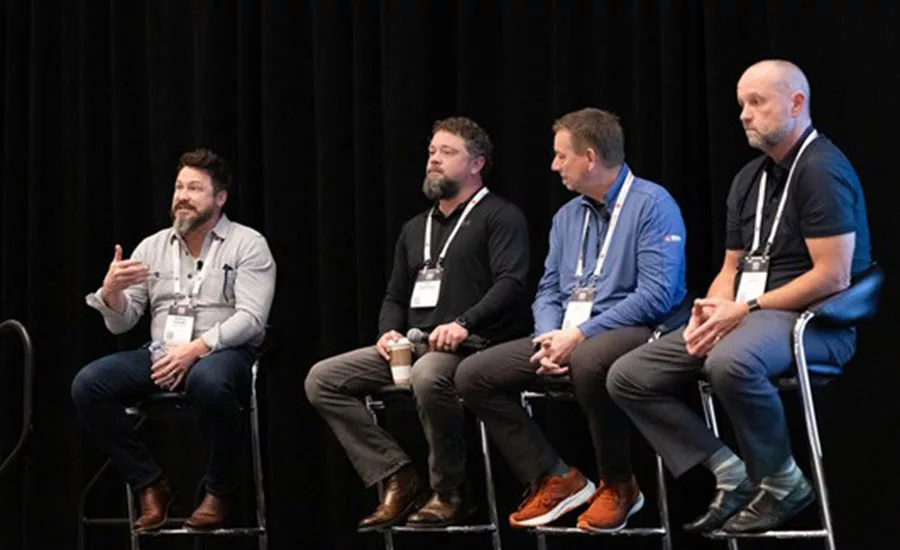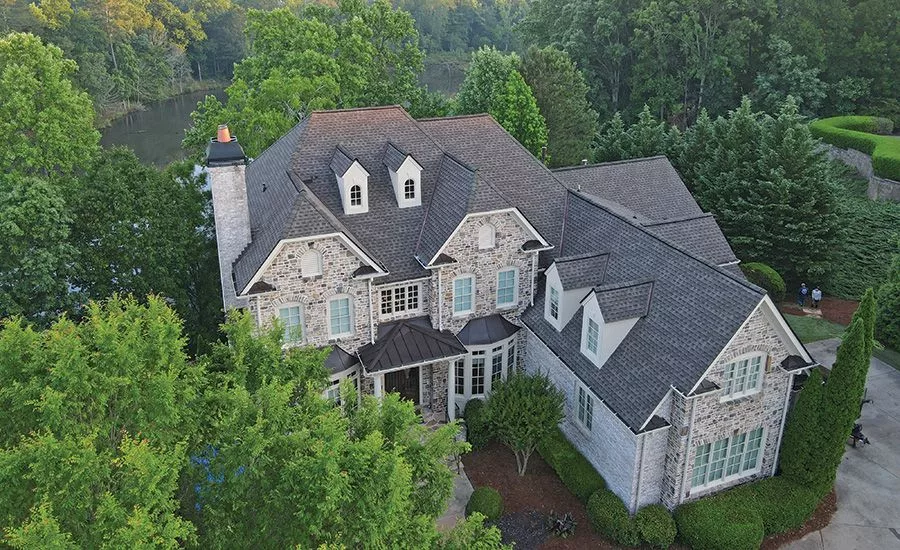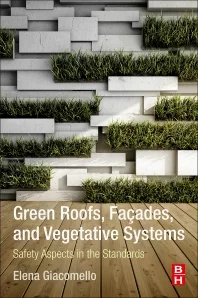Cool Roofs
The Battle Over Cool Roofs Heats Up Following Tennessee Rollbacks
Industry experts question the viability of cool roof mandates while critics claim they're support "dark roof" lobbying efforts

The battle over the validity of cool roofs reignited following actions taken by Tennessee legislators last March to repeal requirements for reflective roofs on commercial buildings.
As reported this week by Floodlight, a nonprofit newsroom investigating those "stalling climate action," Tennessee lawmakers voted to roll back a rule that required commercial buildings to use reflective, cool roof coatings.
Roofing industry representatives framed the move as a response to changing climate dynamics. Critics of the rollback call it “deceptive” and describe the actions as those of a lobbying campaign led by manufacturers of “dark roof” materials.
Dark vs. Light Roofs
The concept of cool roofs is simple: a light-colored roof reflects sunlight, thereby making buildings cooler. Conversely, a dark-colored roof will absorb more heat, raising the temperature of buildings and the surrounding air.
Cool roof requirements are in building and energy standards or ordinances in at least 13 cities and counties, seven states, and the District of Columbia, according to the Environmental Protection Agency.
States like Tennessee have adopted the International Energy Conservation Code’s requirements for cool roofing. The code requires new commercial and multi-family buildings with low-sloped roofs to install cool roofs that are designed to reflect solar energy and reduce heat transfer.
 Image courtesy of the CRRC
Image courtesy of the CRRCRELATED | Tenn. Bill Exempts Low-Slope Roofs from Energy Standards
The rationale is that cool roofs will not only reduce energy costs and improve health and comfort, but also ease the effects of the “urban heat island effect,” which is when extra heat is trapped in neighborhoods due to surfaces like roofs and pavement absorbing sunlight.
When roofing a low-slope building, two roofing systems conflict with the cooling of buildings. For the longest time, EPDM (ethylene propylene diene terpolymer) single-ply roofing systems were the mainstay of commercial roofing thanks to their durability. More recently, builders have opted for TPO, a plastic single-ply material, often white, instead of the black, synthetic rubber roofing of EPDM.
According to RC’s 2025 State of the Industry report, TPO is the most popular commercial roofing system, with respondents saying it accounts for just under half (49%) of their total annual sales revenue. Compare this to EPDM, which accounts for 28%. In 2024, TPO was 48% and EPDM was 30%.
Industry Experts Weigh In
Formed in 2003, the EPDM Roofing Association represents manufacturers of EPDM roofing materials, among other roofing systems. In a report released last January, the ERA continued its mission of taking a holistic approach to what they call “old assumptions” about roofing systems using three different studies.
The report suggests that “many questions” need to be answered before the real-world implications of “one-size-fits-all reflective roofing mandates” can be understood and evaluated.
“The ERA recommends that policymakers pause the implementation of policies that require reflective roofing mandates and calls upon government agencies, nongovernmental organizations, and other stakeholders to conduct additional research to assess the relative value of every tactic that could be used to diminish the impact of [urban heat islands] and increase building energy efficiency,” the study says.
Tennessee lawmakers did just that on March 11, seeking input from Ellen Thorp, executive director of the ERA and co-author of the report mentioned above. During the vote, Thorp, who is also managing director of the Coalition for Sustainable Roofing, framed the bill as “simply a fix, not quite administrative but almost.”
She stated that the coalition supports Tennessee’s adoption of the 2021 Energy Conservation Code; however, Tennessee, along with three other states, had a product restriction applied that required highly reflective roofing materials, which she believed was unnecessary for a state like Tennessee.
“This simply removes that from the Energy Conservation Code. It’s still allowed to be used, it’s just not a regulatory mandate,” she said.
The Asphalt Roofing Manufacturers Association has also supported not requiring reflective roofing. In an email to Floodlight, ARMA Executive Vice President Reed Hitchcock said such rules aren’t a “magic bullet” and called for a whole-building approach to addressing heat issues, which includes factors like insulation in addition to roofing.
In its January 2025 report, the ERA acknowledges that most studies show cool roofs do save energy and reduce urban heat islands, but points out that it is context-based, and is interested in identifying areas for improving cool-roof research.
What the Science Says
The American Society of Heating, Refrigerating and Air-Conditioning Engineers prescribes cool roofs as a strategy for mitigating the impacts of urban heat islands. The group’s standards recommend reflective roofs on commercial buildings in the hottest U.S. climate zones labeled 1, 2, and 3.
- A 2024 study from the U.S. Department of Energy Office of Scientific and Technical Information analyzed how cool roofs and wall coatings affect energy use during peak power demands. The study says buildings with high solar-reflective roofs and exterior walls increase cooling energy savings but also increase heating energy consumption.
- A 2019 study examining cool roofs in urbanized United Kingdom areas showed that the heat reduction could offset 18% of seasonal heat-related mortality associated with urban heat island effects.
- A 2017 study assessing city policies to reduce climate change impacts shows that local actions can be a climate risk-reduction instrument and limiting urban heat islands through city adaptation plans can “significantly amplify the benefits” of mitigation efforts.
- A 2012 study monitored three generic white membranes within New York City, including EPDM, TPO and BUR coated with white elastomeric acrylic paint. It showed the membranes maintained temperature control over a multi-year period, noting EPDM showed evidence of low emissivity but also avoided winter heat penalties.
The Cool Roof Rating Council, a nonprofit organization that develops methods for evaluating and labeling the radiative properties of roofing products, says that beyond energy savings, cool roofs contribute to the reduction of greenhouse gas emissions and potentially cool the planet by canceling out the warming effect of 44 to 57 billion metric tons of emitted carbon dioxide.
One argument against cool roofs, especially in areas with colder climates, is that they increase heating bills. The CRRC says heating costs are usually “insignificant compared to the cooling energy savings during the summer,” noting the sun is much lower in the sky and less intense in the winter and that winter days are shorter.
Regarding price points, the CRRC says many cool roof varieties cost the same amount as comparable traditional roofs, and that additional costs can be recovered through energy savings.
More Cool Roofs in the Future?
Reducing energy bills is among the reasons why more communities are considering cool roof technology. A 2023 study published in Science Direct notes that, due to climate change, extreme heat events occur more frequently and with greater intensity, especially in “socioeconomically disadvantaged urban populations.”
Both ARMA and Thorp’s group lobbied against similar laws in Baltimore in 2022, arguing that current research doesn’t support the adoption of cool roofs as a measure to achieve improved energy efficiency. Despite this, Baltimore passed a cool roof ordinance in 2023.
Meanwhile, in Atlanta, the City Council voted unanimously on Tuesday to pass a new ordinance requiring new and replacement roofs to be built with light-colored, reflective materials.
In an opinion piece published in The Tennessean, Rep. Harold Love, Jr., (D-Nashville) called Tennessee’s bill a “jargon-loaded legislation” that he believes will harm the health of Tennesseans, accusing proponents of such bills of seeking profits.
"The lobbyists who pushed the bill through, representing roofing companies that manufacture so-called 'dark roof' products, know they are losing market share because dark roofing materials make buildings less efficient, communities hotter, and often cost more than cool-roof options," he wrote.
“We desperately need more cool roofs in our state. Every year, at least 2,000 emergency room visits in Tennessee are attributed to heat, with over 4,000 heat-related ER visits in 2023 alone, according to the Tennessee Department of Health,” he wrote.
Looking for a reprint of this article?
From high-res PDFs to custom plaques, order your copy today!





